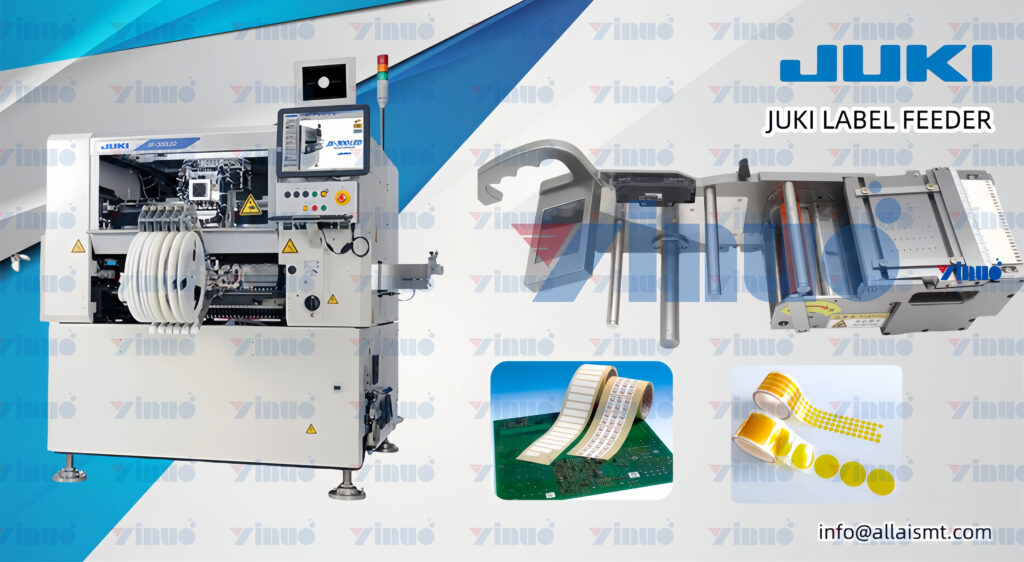The Role of Label Feeders in Enhancing Supply Chain Visibility
In today’s fast-paced and technology-driven world, the importance of a streamlined and efficient supply chain cannot be overstated. With the growing complexity of global markets and increasing consumer demands for transparency, companies are seeking advanced solutions to enhance visibility across their supply chains. One such solution is the use of label feeders, a technology that plays a crucial role in enhancing supply chain visibility and improving overall efficiency.
What are Label Feeders?
Label feeders are automated devices used in manufacturing and logistics processes to apply labels to products, packages, or components. These feeders are typically integrated with production lines and packaging systems, allowing for the continuous and precise application of labels without human intervention. The labels themselves often contain vital information such as product details, barcodes, RFID tags, and shipping instructions, which are essential for tracking and identification purposes.
Enhancing Supply Chain Visibility through Real-Time Data
One of the key contributions of label feeders to supply chain visibility is their ability to provide real-time data. By automatically applying labels that are encoded with digital information, label feeders enable companies to track products and materials at every stage of the supply chain. This real-time tracking allows for greater transparency, as companies can monitor the movement of goods from production through distribution to the end consumer.
For instance, RFID-enabled labels applied by label feeders can provide instant updates on the location of products within a warehouse or during transportation. This information can be integrated into a company’s warehouse management system (WMS) or transportation management system (TMS), providing detailed insights into the status and condition of goods. The ability to access real-time data not only improves operational efficiency but also enables companies to respond quickly to any issues or delays.
Reducing Human Error
Manual labeling processes are prone to human error, which can lead to mislabeled products, lost shipments, and delays in the supply chain. Label feeders automate the labeling process, significantly reducing the likelihood of mistakes. This automation ensures that labels are applied accurately and consistently, which is essential for maintaining the integrity of supply chain data. Accurate labeling also plays a vital role in compliance with industry regulations, especially in sectors like pharmaceuticals, electronics, and food and beverage, where precise labeling is mandatory.
By minimizing human error, label feeders contribute to more reliable data collection and tracking, which in turn enhances the overall visibility of the supply chain. Companies can be confident that the information they are receiving is accurate, which helps in making informed decisions regarding inventory management, shipping schedules, and customer deliveries.
Enabling Better Decision-Making
With enhanced visibility comes the ability to make better, data-driven decisions. Label feeders contribute to a more transparent and accurate flow of information, enabling supply chain managers to optimize processes and reduce inefficiencies. For example, by analyzing data from labels, companies can identify bottlenecks in the production or distribution process and take corrective actions to improve performance.
Additionally, having access to real-time data allows for proactive decision-making. If a delay is detected in the supply chain, managers can quickly adjust production schedules or reroute shipments to meet delivery deadlines. This level of responsiveness is critical in today’s highly competitive markets, where delays can result in lost sales and damage to brand reputation.
Improving Customer Satisfaction
Enhanced supply chain visibility also directly impacts customer satisfaction. Customers today expect full transparency when it comes to the products they purchase, including information on origin, manufacturing processes, and delivery status. By using label feeders to accurately track and label products, companies can provide their customers with real-time updates on their orders, from production through to delivery.
Moreover, the ability to provide detailed product information, such as traceability data, can enhance customer confidence in a brand. For example, in industries like food and beverage, consumers are increasingly concerned about the source of their products. Labels applied through label feeders can include information on where ingredients were sourced, how the product was manufactured, and whether it meets specific sustainability criteria.
Supporting Sustainability Efforts
In addition to enhancing visibility, label feeders can play a role in supporting sustainability initiatives within the supply chain. By ensuring that products are labeled accurately, companies can reduce waste caused by mislabeled or damaged goods. Moreover, the data provided by labels can help companies track and reduce their carbon footprint by optimizing transportation routes, reducing energy consumption, and ensuring compliance with environmental regulations.
Conclusion
The integration of label feeders into supply chain operations offers a significant advantage in enhancing visibility, improving efficiency, and reducing errors. As businesses continue to adapt to the evolving demands of the global market, label feeders provide a critical tool for achieving greater transparency, enabling better decision-making, and improving customer satisfaction. By leveraging the benefits of real-time data, automated accuracy, and enhanced traceability, companies can build more resilient, responsive, and sustainable supply chains.


